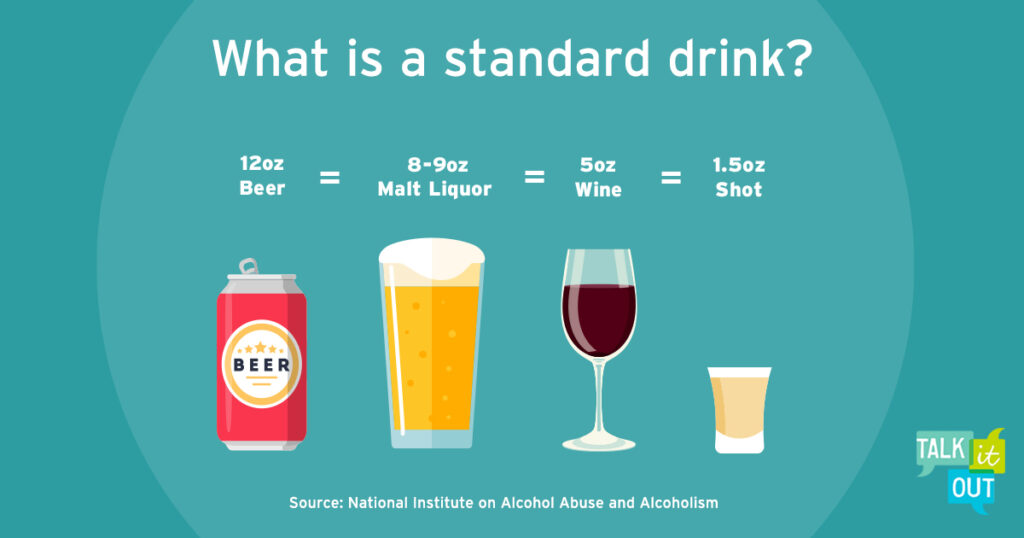Teens experimenting with alcohol use is never a good idea. This blog was very informative with many of the issues a parent can talk about with their children.
Alcohol Content: What Your Teen Should Know
Teaching your children about alcohol content and how it can affect them will help your teenager make safe decisions regarding alcohol consumption throughout their life.
In the United States, one standard drink has 14 grams of pure alcohol, the National Institute on Alcohol Abuse and Alcoholism reported. Yet, the amount of liquid in a glass is not a measure of alcohol content. Looks can be deceiving, depending on the type of alcohol filling the cup. For example, a can of beer contains the same amount of alcohol as your average shot of liquor, such as tequila.
Why Alcohol Content Matters
Your children need to understand alcohol content to enable them to make smart choices in the future. When a person drinks an adult beverage, the alcohol moves into the bloodstream from the stomach and small intestines. The liver breaks down the alcohol in the bloodstream, turning it into carbon dioxide and water, and it is removed from the body by the lungs and urine. The number of drinks a person consumes will impact their blood alcohol concentration, which is a measure of the percentage of alcohol in their bloodstream. When the liver completes its job, BAC returns to zero.
Drinking water, coffee, or taking a cold shower will not help a teen or adult sober up any faster. The liver has to process the alcohol in the body, which takes a different amount of time for different people, depending on their metabolism.
A person’s BAC can be officially measured by using a breathalyzer, but behavior and body cues can be a good indication of an individual’s alcohol consumption. According to Alcohol.org, a person with a .05 percent BAC may feel less inhibited, while a person with a .15 percent BAC will be sloppy and display a disoriented demeanor. Once a person hits .20 percent BAC, they may black out.
The amount of time a person takes to finish a drink, their weight, and the amount of food they’ve consumed can all impact BAC. According to NIAA, women will have a higher BAC than men, even if they drink the same amount, because females generally have smaller livers, and hormones can impact their metabolism.
While it’s illegal for adults 21 and older to drive with a BAC higher than .08 percent, the standard for underage drivers is stricter. It’s illegal for underage drivers to get behind the wheel with a BAC of .01 percent or higher.
Alcohol Content and the Teenage Brain
Research reveals that teenagers do not feel the effects of alcohol as much as older adults, which makes them more susceptible to over-imbibing or binge drinking. Alcohol slows down brain activity, and the negative effect of alcohol on the teenage brain can last up to two weeks longer than an adult. If a teenager uses alcohol before their brain is fully developed, it can hamper the good judgment and impulse-control part of the brain from properly developing. Alcohol can also damage the memory and learning areas of the brain.
How to Start the Conversation
Starting the conversation about alcohol content and teenage drinking needs to begin earlier than most parents think. The average age a child tries alcohol for the first time is 14 years old. Here are some tips to get the conversation rolling.
Be Honest.
As you’ve probably already learned, teens don’t appreciate lectures. Start the conversation by dishing on the reality of teen drinking, especially binge drinking. Describe how alcohol can increase aggressive behavior and poor decision-making. Give them the facts of BAC measurements and educate them about alcohol content to help keep them safe.
Talk Often.
Studies show that having meaningful conversations with teens about important topics such as sex, underage drinking, and peer pressure can have a big impact on teenage behavior. Find opportunities to have frequent conversations with your teen and keep the lines of communication open; so they feel comfortable coming to you if they have a question or concern in the future.
Set a Good Example.
Actions speak louder than words. Be a good role model for your teen by moderating alcohol consumption and showing them they can have fun without drinking.
Lay Out the Rules.
Talking to your teen about drinking is important but having a system of rules in place to help them understand the consequences of their actions will help deter them from imbibing. Don’t forget to let them know you will be there for them if they do make a mistake and need a ride, no questions asked.
Take the pledge to teach your children about alcohol content and the perils of underage drinking today.
This article first appeared here.




